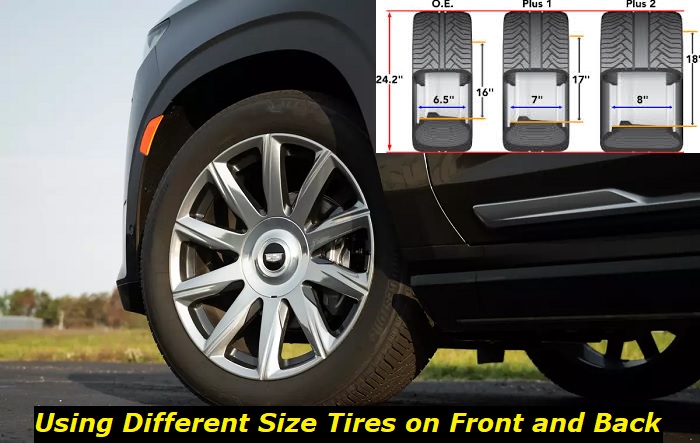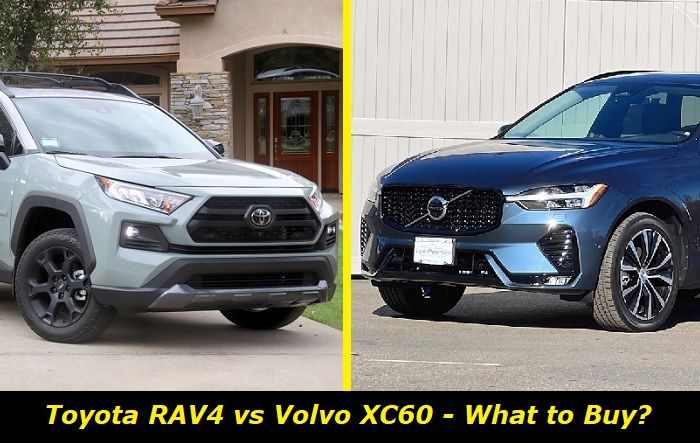Most drivers do not think much about their wheel size and the huge effect it has on their driving experience. When it comes to wheels, size certainly matters. Your wheel size will affect your car's balance, engine performance, and even fuel consumption. Not to mention, depending on where you live, having different sizes of wheels on the front and back of your car could be illegal.
Wheels mods highlights
- Commonreasons:pursuit of better design
- Average prices:$400 - $2,000
- Average waiting time:3 - 10 days
- Common problems:baddesign, unwanted results, poor painting quality
- DIY mods:possible but very complicated
- Level of satisfaction:medium

Is it Legal to Have Different Wheel Sizes?
In most areas, driving regulations require that vehicles be maintained in roadworthy condition. The definition of roadworthy varies but rarely delves into the particulars of mismatching wheel sizes. Laws are not meant to be petty and legislators know that drivers often have valid reasons for changing their vehicle's wheels.
You should however be warned that modifying your vehicle's wheel size may cause your insurer to deny claims that would have otherwise been approved. Be sure to consult your insurance provider to ensure that modifications do not invalidate your policy.
Is it Safe to Have Different Size Wheels and Front and Back?
If your wheel change is carried out by a licensed and insured professional, you have nothing to worry about. This is not the type of project you want to DIY or entrust to an amateur mechanic because a lot of things could go wrong. Modifications need to be well calculated to ensure they do not make your vehicle unsafe to drive and therefore unroadworthy.
All cars can be modified to run on smaller or larger wheel sizes than the stock option. The safest and best choice for you depends on your car type and the type of driving you regularly subject it to. If you had rather not worry that your wheel change may have compromised your safety, it is best to stick to licensed professionals.
Considerations When Changing Your Wheel Size
The reason you need a professional opinion on the right wheel specifications when looking to change the stock option is that there are plenty of factors that have to be gotten right. These include:
1) Determine Your OEM Wheel Specifications
Before determining whether or not to change your wheel size, it is essential to figure out your current OEM wheel specifications. Your tire size can reveal most of this information. The last number in the tire size indicates the wheel height in inches.
The wheel width can be read as the first number in the tire size. It is indicated in millimeters. This number is suggestive of the wheel width but not 100% accurate because a tire can fit on varying wheel widths.
Wheel diameter is also typically included in the tire size, but you can also use a tape measure to get a precise measurement. Run the tape measure across the wheel face (top to bottom). Do not include the outer wheel lips (those holding the tire in place) when taking the measurement.
You can spare yourself the hassle by contacting the dealership's service department for the exact stock wheel specifications. Once you get the dimensions of your wheels and tires sorted out, you will need to worry about the measurements after mounting your wheel barrels. The measurements include wheel offset and backspacing.
Wheel offset is measured from the center of the wheel to the inside/rear of your wheel mounting face. Offset causes the wheel to adjust outward or inward once after mounting. Like wheel width and diameter, offset plays an important role in clearance.
Wheel backspacing is an element of offset measurement. Rather than measuring from the mounting face's rear to the wheel centerline, the measurement is taken to the inside edge of the wheel lip.
All these measurements must be taken correctly to determine whether your vehicle can safely accommodate a change in wheel size. The accuracy of these measurements is crucial because it dictates the safest and most efficient change in wheel size for your clearance and purpose.
2) Choosing the Right Wheel Width and Diameter
The wheel width is the distance between the wheel lips/edges. It is measured in half-inch increments. Manufacturers opt for square or staggered wheel-width setups. The former uses a uniform width for all the wheels and the latter has differing widths for the front and rear sets of tires. Wheel diameter is measured in inches across its face.
The right wheel width and diameter will depend on:
- Your vehicle's clearance
- The purpose of the wheel change.
Clearance:
Clearance is technically the distance between your car's chassis and the center of the wheel. In more practical terms it is the space between the wheel well and your stock set of tires and wheels. The amount of clearance space available will ultimately define the best wheel size (other than the stock measurement).
The easiest way to figure out your car's clearance is by having a professional evaluate the distance between your wheels, tires, and surrounding components. Clearance measurements are taken while your car's suspension is loaded with weight because an unloaded suspension causes inaccurate measurements. When taking clearance in the front wheels, ensure you turn the steering wheel lock to lock.
Once a professional determines safe clearance you can rest assured that your new set of wheels won't compromise your safety or damage your vehicle.
Purpose:
Are you looking to change the wheel size of your car for the cool factor or to improve its performance? If it is the former, you are better off sticking with the manufacturer's recommendations for front and rear wheel sizes. The wheel specifications for your car are painstakingly selected during vehicle testing that ensures the width is optimal for the engineering.
Improving vehicle performance is the only reasonable cause of undergoing the trouble to change your wheel size. Consulting a professional will help you figure out the best wheel size for your intended purpose.
When looking to improve your vehicle's offroading capabilities, it is recommended to select a wider wheel and tire size to increase your footprint. The wider the wheel size and tire, the more traction it can gain in difficult offroading scenarios. The same recommendation is suitable for drivers looking to engage in high-performance driving because it ensures the maximum grip necessary for easy handling at high speeds.
Another common reason for changing wheel size is when looking for a spare set of winter rims. Some drivers opt to buy a cheap set of wheels for winter use to spare the more expensive set of rims from road salt damage. In such cases, professionals recommend that drivers switch to a narrower wheel size than the OEM. The narrower wheels and tires prevent the car from skidding on icy roads because the smaller footprint can slice through the road surface easily.
3) Ensuring the New Wheels Fit Your Tires
Unless you are looking to splurge on new wheels and tires, it would be wise to ensure that your new wheels match and can work with your old tires. A professional can offer excellent advice on whether your stock tires and wheels can work together without affecting your car's performance or your safety. In most cases altering the diameter or width of your wheel means purchasing a new set of tires to boot. If you had rather not spring for new tires, consider sticking to the manufacturer's stock wheel specifications.
General Recommendation When Changing Wheel Size
It is not recommended to alter the OEM wheel and tire size recommendation unless you need a performance boost. When selecting appropriate wheel widths, keep the following in mind:
- Off-roading vehicles are best off with a tire width that is larger than the wheel width. The resulting sidewall bulge keeps rocks away from the wheel and prevents the tires from debeading under low pressure.
- Sports cars generally match tread width and wheel width
- Snow tires generally have a smaller wheel and tire width than normal wheels.
- On-road vehicles do well with a large tire width and smaller tire sidewall. The shortened tire sidewall causes on-road vehicles to handle and respond better during braking, cornering, and accelerating.
Conclusion
Changing your vehicle's OEM wheel and tire size could have a profound impact on your vehicle's safety and handling. If done incorrectly, it could even invalidate your insurance policy. That said, wheel size change is a job best left to the professionals. Mostly because it involves taking complex measurements where accuracy is critical.
Recommending wheel size is not a DIY kind of task so if you are tempted to change your wheels, seek out a licensed and insured professional. It is the only way to ensure you do not reduce your vehicle's value, performance, and safety.
About the authors
The CarAraC research team is composed of seasoned auto mechanics and automotive industry professionals, including individuals with advanced degrees and certifications in their field. Our team members boast prestigious credentials, reflecting their extensive knowledge and skills. These qualifications include: IMI: Institute of the Motor Industry, ASE-Certified Master Automobile Technicians; Coventry University, Graduate of MA in Automotive Journalism; Politecnico di Torino, Italy, MS Automotive Engineering; Ss. Cyril and Methodius University in Skopje, Mechanical University in Skopje; TOC Automotive College; DHA Suffa University, Department of Mechanical Engineering






Add comment